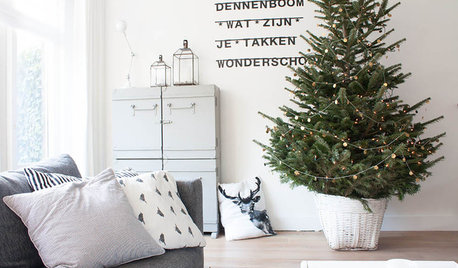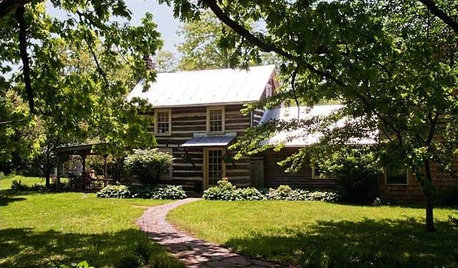Dying Pear Tree
smilecfk
14 years ago
Related Stories

EDIBLE GARDENSHow to Grow Your Own European and Asian Pears
Try these trees for their good looks, delicious fruit and wide range of sizes — plus you can espalier them
Full Story
EDIBLE GARDENSWhy Grow Quince? For Beauty, Fragrance and Old-Time Flavor
Delightfully perfumed fruit and lovely spring blossoms make this apple and pear cousin worth a spot in the garden
Full Story
FARM YOUR YARDIf You Have Room for Only One Fruit Tree ...
Juice up a small garden with one of these easier-care or worth-the-effort fruit trees for a mild climate
Full Story
EDIBLE GARDENSHow to Grow 10 Favorite Fruit Trees at Home
Plant a mini orchard in fall, winter or early spring to enjoy fresh-off-the-tree fruit the following year
Full Story
EDIBLE GARDENSHow to Add an Apple Tree to Your Edible Garden
Readily available, beautiful and fragrant, apple trees offer four-season interest along with crisp, juicy fruit
Full Story
LANDSCAPE DESIGN7 Great Trees for Summer Shade and Fall Color
These landscape-pro faves straddle the seasons beautifully. Could one enhance your own yard?
Full Story
SPRING GARDENING7 Spectacular and Practical Spring-Flowering Trees
Put on a beauteous show in the garden with a landscape tree awash in flowers — just do your homework first
Full Story
ARBOR DAY8 Reasons to Plant a Great Tree
Beauty is its own reward, but the benefits of planting the right tree in the right place go way beyond looks
Full Story
HOLIDAYSHouzz Call: Show Us Your Christmas Tree!
How lovely are your branches? Post a picture and share your stories
Full StoryMore Discussions








ken_adrian Adrian MI cold Z5
smilecfkOriginal Author
Related Professionals
Clark Landscape Architects & Landscape Designers · Kenmore Landscape Architects & Landscape Designers · Middle Island Landscape Architects & Landscape Designers · Forest City Landscape Architects & Landscape Designers · Braintree Landscape Contractors · Cliffside Park Landscape Contractors · Desert Hot Springs Landscape Contractors · Eureka Landscape Contractors · Holland Landscape Contractors · Saint George Landscape Contractors · Siloam Springs Landscape Contractors · West Chester Landscape Contractors · Greenfield Landscape Contractors · Cedar Park Siding & Exteriors · Palm Beach Gardens Decks, Patios & Outdoor EnclosuresDan _Staley (5b Sunset 2B AHS 7)
brandon7 TN_zone7
ken_adrian Adrian MI cold Z5
jean001
brandon7 TN_zone7
smilecfkOriginal Author
jm30
brandon7 TN_zone7
Dan _Staley (5b Sunset 2B AHS 7)
smilecfkOriginal Author